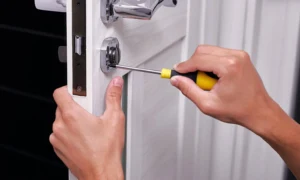In the labyrinth of human connections, some read relationships reviews can turn detrimental, leaving individuals feeling drained, demoralized, and distressed. Understanding the essence of toxicity within relationships is crucial for safeguarding one’s emotional well-being. So, what is a toxic relationship, and how can you recognize its presence? Delve into this guide to unravel the intricacies of toxic relationships and empower yourself with insights to navigate healthier connections.
What is Toxic Relationship Mean?
Toxic relationships encompass interpersonal dynamics characterized by negativity, manipulation, and emotional harm. They thrive on imbalance, control, and disregard for boundaries, fostering an environment of toxicity that erodes individuals’ self-esteem and mental health.
Recognizing the Signs
- Constant Criticism and Blame: In toxic relationships, individuals are subjected to relentless criticism and blame, regardless of their actions or efforts. This perpetual fault-finding undermines self-worth and fosters a sense of inadequacy.
- Lack of Support and Empathy: Healthy relationships thrive on mutual support and empathy. Conversely, toxic relationships are marked by a lack of compassion and understanding, with one or both parties dismissing the other’s emotions and needs.
- Manipulative Behavior: Manipulation is a hallmark of toxic relationships, with one party exerting control over the other through deceit, guilt-tripping, or gaslighting. This manipulative behavior erodes trust and autonomy, leaving individuals feeling trapped and powerless.
- Constant Drama and Conflict: Toxic relationships are often characterized by incessant drama, conflict, and volatility. Arguments escalate quickly, unresolved issues linger, and peace becomes a fleeting illusion amidst the chaos.
- Isolation and Alienation: Toxic individuals may seek to isolate their partners from friends, family, and support networks, thereby exerting greater control over their lives. This isolation perpetuates dependence and facilitates manipulation.
- Emotional and Physical Abuse: At the extreme end of toxicity lies emotional and physical abuse, where individuals endure psychological torment, intimidation, or violence at the hands of their partners.
- Stagnation and Regression: Instead of fostering growth and fulfillment, toxic relationships hinder personal development, leaving individuals feeling stagnant, disillusioned, and trapped in a cycle of dysfunction.
Escaping the Toxic Trap
Breaking free from a toxic relationship is a courageous and empowering endeavor. Recognizing the signs is the first step towards liberation, followed by:
- Setting Boundaries: Establishing clear boundaries is essential for protecting oneself from further harm and asserting autonomy within the relationship.
- Seeking Support: Reach out to trusted friends, family members, or mental health professionals for guidance, validation, and support throughout the healing process.
- Prioritizing Self-Care: Invest in self-care practices that nurture your physical, emotional, and psychological well-being, such as mindfulness, exercise, and creative outlets.
- Embracing Growth: Use the experience as an opportunity for growth, self-reflection, and personal development, channeling newfound resilience and wisdom into future relationships.
FAQs (Frequently Asked Questions)
How do I know if I’m in a toxic relationship?
- Signs of a toxic relationship include constant criticism, lack of empathy, manipulation, and emotional or physical abuse.
Can a toxic relationship be saved?
- While some relationships may improve with open communication and counseling, others may be irreparably toxic and require termination for individuals’ well-being.
What are the long-term effects of being in a toxic relationship?
- Long-term effects may include diminished self-esteem, anxiety, depression, and trauma-related symptoms, necessitating therapeutic intervention and support.
Is it my fault that the relationship turned toxic?
- No, toxicity within a relationship is not solely the fault of one individual. It stems from dynamics of power, control, and dysfunction between both parties.
How can I rebuild my confidence after leaving a toxic relationship?
- Rebuilding confidence involves self-compassion, self-discovery, and surrounding oneself with supportive relationships that affirm one’s worth and potential.
What are some red flags to watch out for in a new relationship?
- Red flags include possessiveness, jealousy, lack of respect for boundaries, and dismissive attitudes towards one’s feelings and autonomy.
Conclusion
Navigating the complexities of relationships requires discernment, self-awareness, and courage. By understanding the nuances of toxic relationships and empowering oneself with knowledge and resilience, individuals can break free from toxicity’s grip and cultivate relationships that nurture their growth, happiness, and well-being.






























